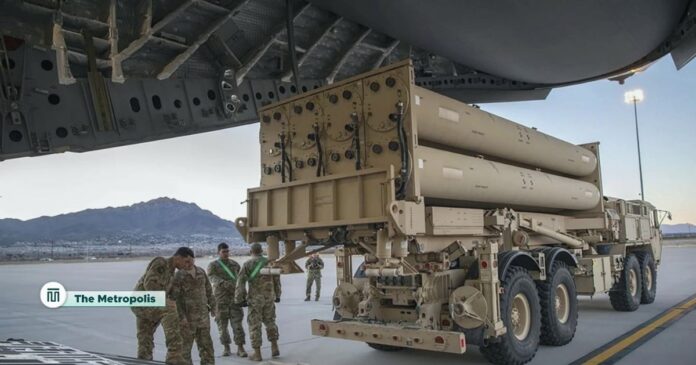The US announced on Sunday that it will send US troops and an advanced US anti-missile system to Israel in a highly unusual move to support Israel’s air defences in the wake of Iranian missile attacks.
US President Joe Biden stated that the action was taken “to defend Israel,” and he is considering taking anticipated punitive action against Iran following Tehran’s October 1 missile barrage on Israel.
According to officials, the US has been quietly pressuring Israel to temper its reaction so as to prevent starting a wider conflict in the Middle East. Biden has openly expressed his opposition to an Israeli attack on Iran’s nuclear facilities and his worries about an attack on the country’s energy infrastructure.
As part of “the broader adjustments the US military has made in recent months” to support Israel and protect US personnel from attacks by Iran and Iranian-backed groups, Major General Patrick Ryder, a spokesman for the Pentagon, described the deployment.
But considering Israel’s own military prowess, a US military deployment to Israel is uncommon outside of drills. Israel has been under Iranian attack in the Middle East, and US troops have helped defend it from warships and fighter jets in recent months.
However, their headquarters were not in Israel.
The Terminal High Altitude Area Defence System, or THAAD, is an essential component of the US military’s multi-layered air defence systems, strengthening Israel’s already strong anti-missile defences.
It usually takes about 100 soldiers to operate a THAAD battery. It has a potent radar and six truck-mounted launchers, each of which has eight interceptors.
Earlier on Sunday, Iran’s Foreign Minister Abbas Araqchi issued a warning, stating that the US was endangering the lives of its soldiers by sending them to operate US missile systems in Israel.
“While we have made tremendous efforts in recent days to contain an all-out war in our region, I say it clearly that we have no red lines in defending our people and interests,” Araqchi wrote in a post on X.
However, analysts claim that Iran has made an effort to avoid going to war directly with the US, so the US military’s deployment to Israel will continue to play a role in its strategy going forward.
In April, Iran fired drones and missiles at Israel. Then, in the midst of yet another uptick in hostilities between Israel and Iran-backed Hezbollah in Lebanon, Iran launched more than 180 ballistic missiles at Israel on October 1. Despite intercepting many in midair, a few managed to bypass missile defences.
US officials did not specify the speed at which they will send the system to Israel.
The last and only known THAAD deployment was in southern Israel for drills in 2019, according to the Pentagon.
Lockheed Martin, the largest arms manufacturer in the United States, builds and integrates the THAAD system, designed to shoot down short-, medium-, and intermediate-range ballistic missiles. Raytheon develops its cutting-edge radar under RTX.



